Bootet bei mir weder von USB3-SSD noch von SD-Karte.
USB3-SSD -> https://pastebin.com/QAS92sme
SD-Karte -> https://pastebin.com/Bsr3WLJ7
Dann schauen wir uns mal an, was der Postbote heute hier abgeliefert hat 

Allgemeine Info's habe ich hier schon mal zusammengefasst.


Auf der Rückseite ist nicht viel interessantes außer der Steckplatz für die Micro SD-Karte.
Was interessiert so als erstes? Hmm, machen wir mal einen Größenvergleich mit einem BananaPi
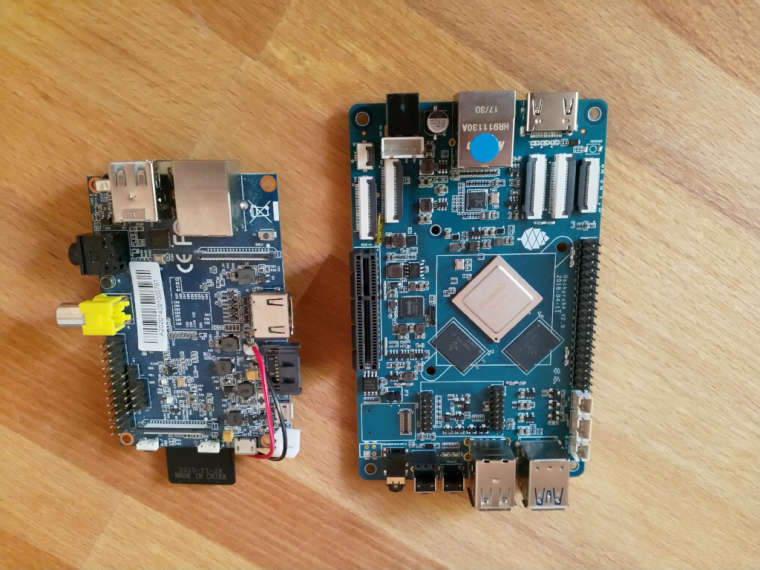
Man erkennt deutlich, das der ROCKPro64 größer ist als ein BananaPi. Die Maße des ROCKPro64
ca. 132 * 80 mm
Gut, als Spannungsversorgung wird ein handelsübliches Computer-Netzteil mit einer Ausgangsspannung von 12 VDC benötigt. Das was ich mitbestellt habe, hat 5A Leistung.
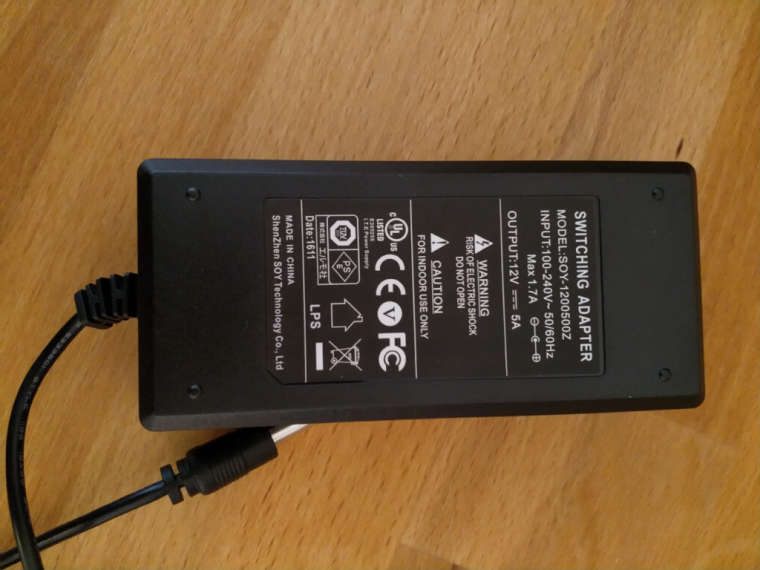
Da habe ich wohl bei der Bestellung auf's falsche Netzteil geklickt. LOL
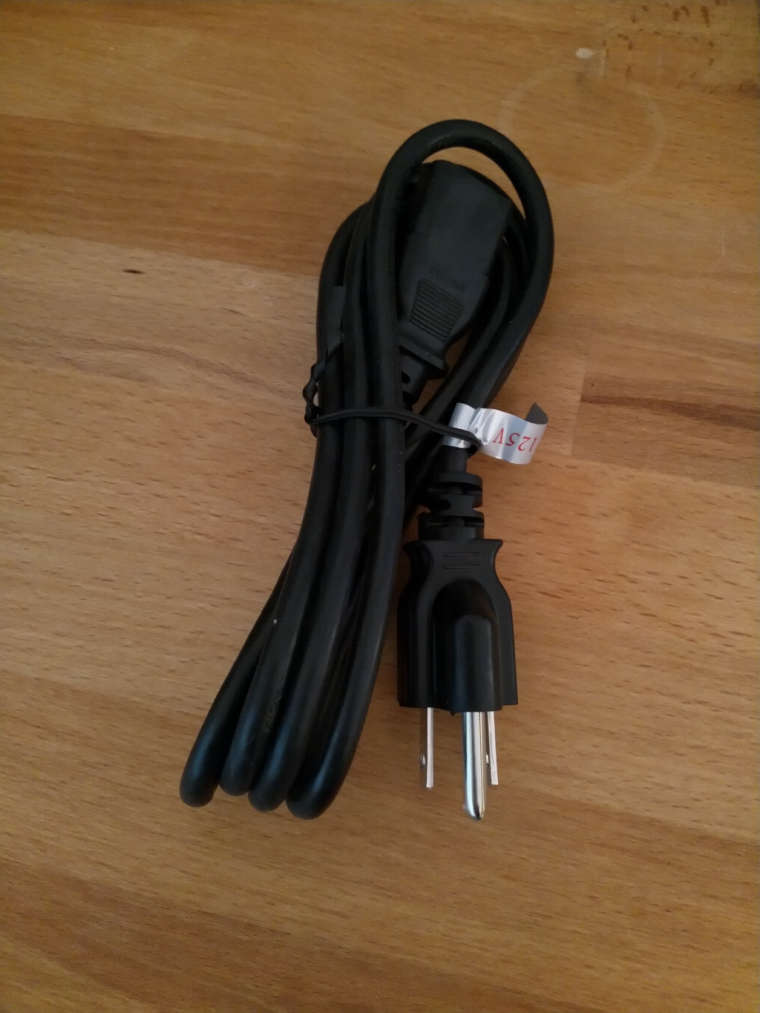
Sieht nach dem falschen Stecker aus. Aber das ist das kleinste Problem, Das Netzteil macht von 100V - 240V. Also, anderen Stecker dran und gut.
Was immer wieder kritisiert wurde in Vergangenheit, waren MiniUSB-Stecker als Versorgungsanschluss. Ich persönlich habe da nie Probleme mit gehabt, weil ich die Platinen nur als Headless Server einsetze und ich somit sehr wenige externe Dinge anschließe. Wenn man mehr anschließt, soll es da zu Problemen kommen. OK, das Problem sollten wir beim ROCKPro64 nicht bekommen.

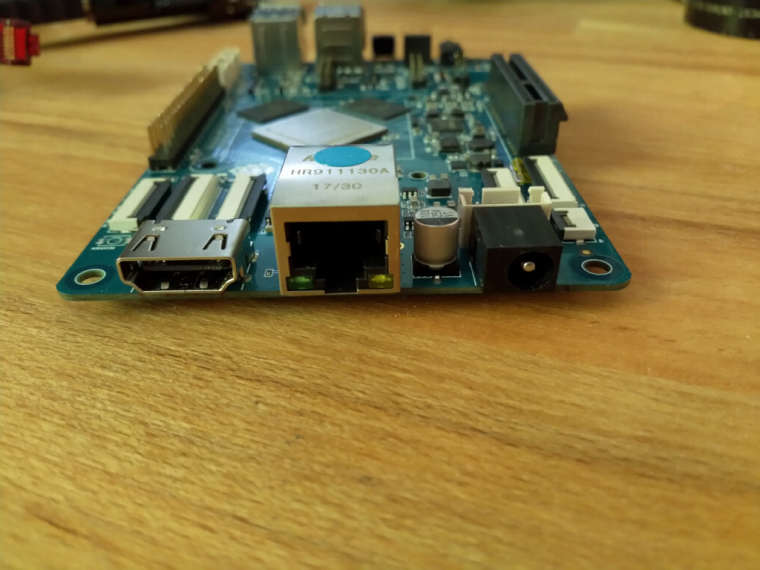
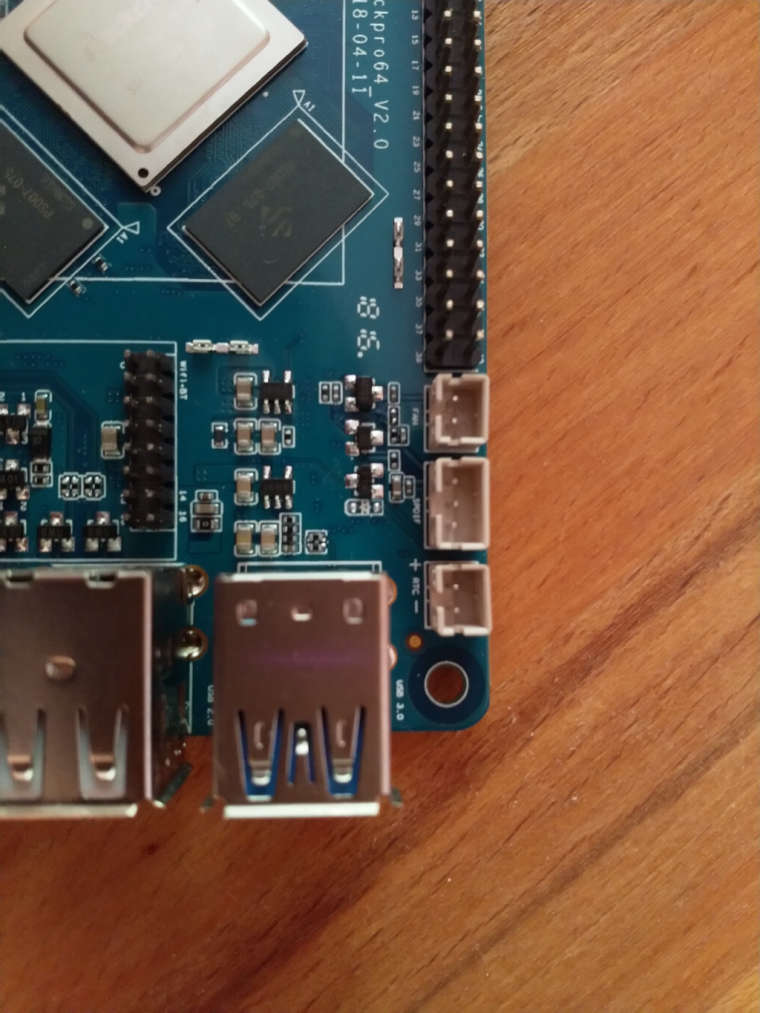
Einige interessante Anschlüsse.
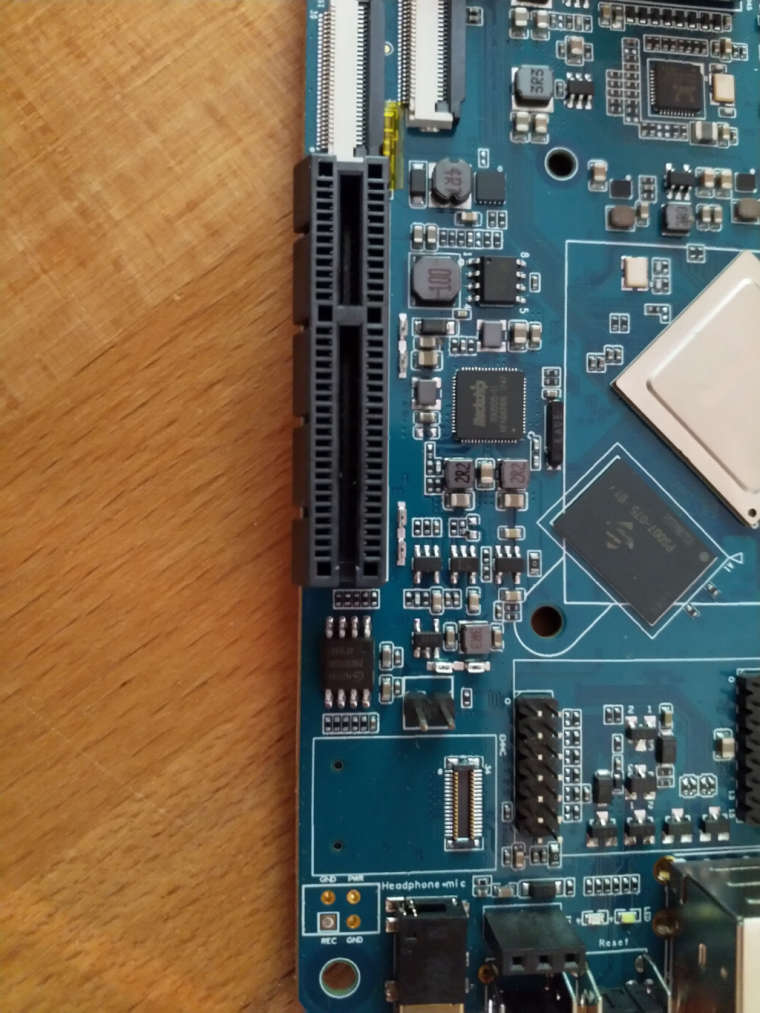
Und hier mein Kaufgrund, die PCIe 4x Schnittstelle, auf die kommen wir später nochmal ausführlich drauf zu sprechen.
Darunter den eMMC Steckplatz für Erweiterungsmodule bis 128GB
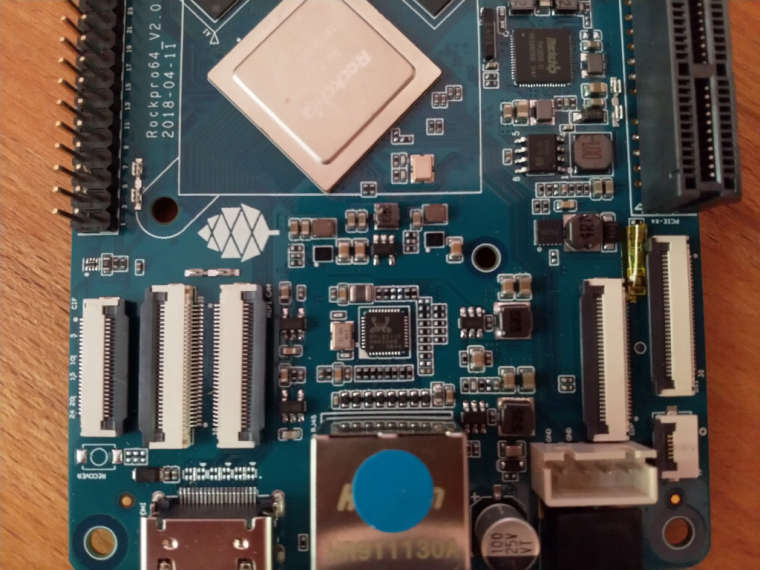
Hier sieht man noch Anschlüsse für Erweiterungen wie Touchpanel usw.
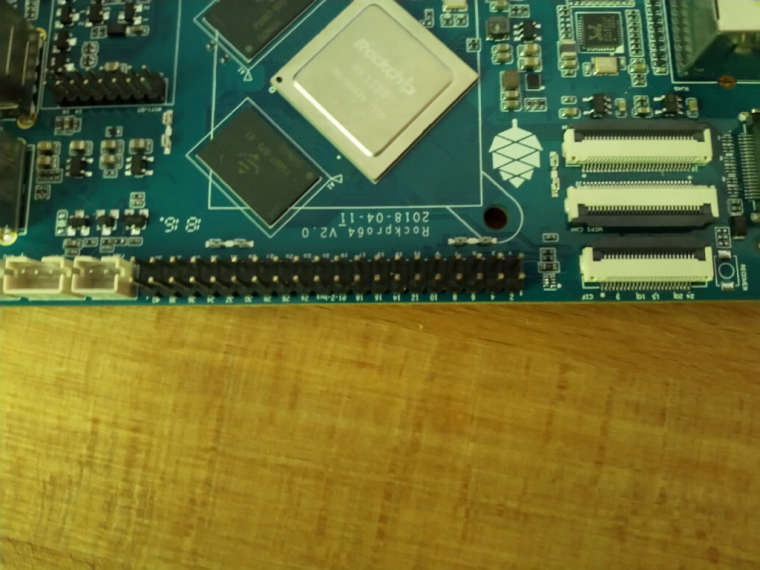
Der 40polige GPIO Expansionsslot mit unzähligen Anschlussmöglichkeiten.
Das soll es erst mal gewesen sein.